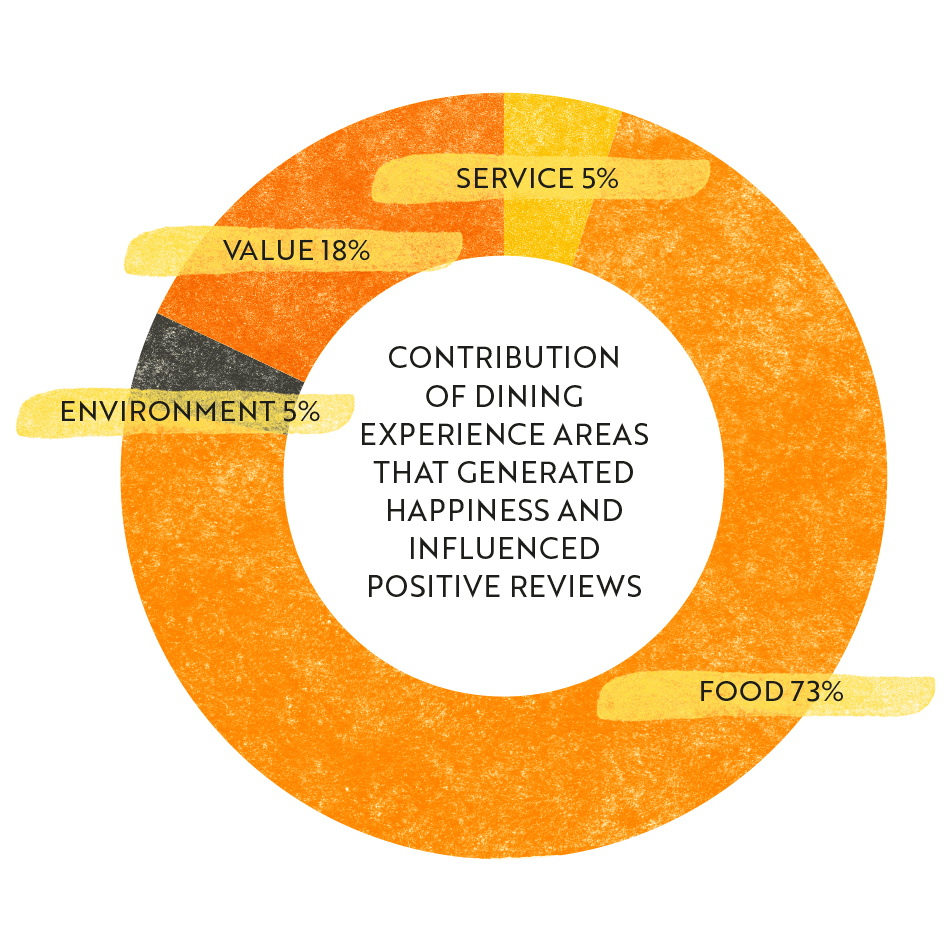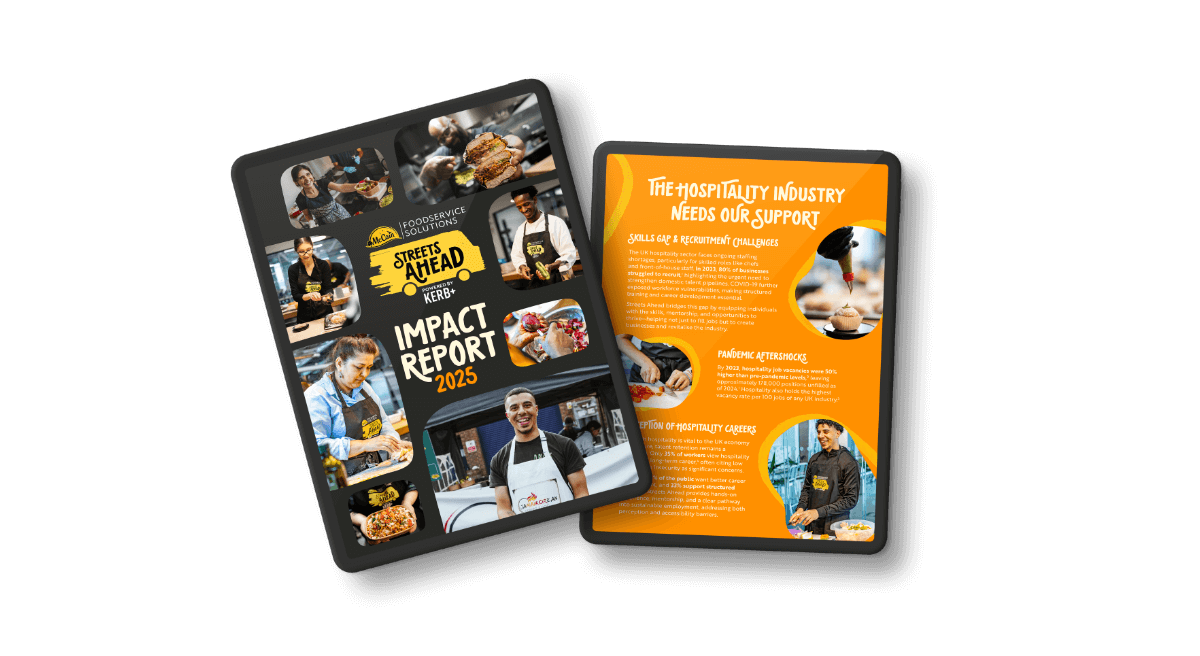McCain has teamed up with professional research company, Toluna. Toluna conducts research all over the world to help household brands best understand their consumers. Their brief was to uncover what really makes diners happy when eating out (and the role of chips, of course) to better understand how this leads to positive dining experiences.
Using an online survey, the research collected data from over 700 UK respondents who had eaten out in the last 6 months. The fieldwork was carried out in February 2023.
Chips are Important to Customers
6 in 10 diners would be more disappointed if chips were missing from the menu than any other menu item.

Chips are the first food encounter
45% of people admitted to stealing a chip from someone else’s plate before their meal arrived (cheeky), and 54% said it’s always the first thing they try.
Chips are the first food encounter a diner has with a pub, bar or restaurant. The quality sets a precedent for the meal to come and ultimately leaves a lasting impression.
Not everyone will complain if the quality isn’t right; they just don’t come back…
In fact, our survey revealed that 44% of customers would not complain if they got a poor-quality meal, but 89% would be unlikely to return if their meal did not live up to their expectations. So don’t cut corners where it matters!
Did you know?
9 out of 10 diners said quality was more important than portion size (200-250g) when it comes to chips. Serving better-quality, optimum portions makes diners happier and leads to a more positive dining experience.
55% of customers agree that the quality of the chips served is important to the overall enjoyment of their meal.
Chips really do matter

1 in 2 customers identified chips as a favourite food when eating out, ranking higher than any other menu item. With the potential for chips to make or break a meal out, McCain decided to build a model to deconstruct what the key factors are in the perfect chip when influencing a great dining experience.
Offering a WIDE RANGE of chips (from skin-on to triple-cooked) generated the most happiness for diners. This was closely followed by CRISPNESS and TASTE, which generated high levels of emotion when it came to the chip experiences.In essence, offer an array of size and style and get the crispness, taste and temperature right when serving a perfectly portioned side of chips, and you’re 89% of the way to total chip perfection.
Get them wrong at your peril! 32% of diners said they would leave a bad review after a terrible chip experience.
Here at McCain we only use the best-quality potatoes that deliver consistent, all-year- round flavour. Our Surecrisp™ range stays crispier and warmer than uncoated fries on plate1, and they stay crispier for longer than the nearest branded coated competitor.¹
In tests, consumers agree McCain SureCrisp™ is crispier and more enjoyable on plate when compared to an uncoated fry.²
Range Appeal
Increasingly, range is becoming more important to diners as certain chip varieties have become synonymous with key mains.
Offering a good and varied range of chips contributed 37% TOWARDS HAPPINESS and positive review intention, making a significant contribution to offering the perfect chip experience. The McCain range allows you to serve the perfect chip with every dish, adding to the overall happiness of your customers and influencing their positive review.
Understanding Diner Experience

Of course, it’s no surprise that food quality is an extremely important factor when it comes to diner experience. In fact, our survey found that the quality of food served is the most important ingredient of an enjoyable meal out, with 73% of respondents saying it made the largest contribution in generating happiness and influencing positive reviews.
We used some clever maths (structural equation modelling) to discover how important each aspect of the dining experience was at driving overall happiness, and the subsequent impact each had on affecting an online review.
We drilled down into each of the four overarching areas to build a Happiness Model that can help operators better understand what areas of their business are directly impacting customer reviews.

Eating out Happiness Model

Quality is King
It’s no surprise that great food quality is THE most important happiness indicator in the mind of the customer. But it turns out size doesn’t matter as much as taste anyway!
Quality was nearly ten times as important as portion size. It’s all about the taste and variety, and that’s especially true when it comes to chips.
Our research found that a whopping 93% of customers are more likely to treat themselves to higher-quality food, with 87% agreeing that it’s important their food is of a good quality as they don’t dine out regularly.
And with 90% of customers now actively looking for outlets that serve good-quality food, this demonstrates an increasing demand for quality over quantity. A perfectly portioned side of delicious and crispy chips will deliver greater levels of happiness than a vast serving of average quality chips. This is a great way to reduce waste and make your diners even happier!
Menu range was also a large contributing factor to the overall happiness index, with customers citing a variety of options as a key factor to their overall dining experience.
But what does that actually mean?
Our research discovered a quarter of diners liked to see a range of different cuts of chips on the menu – from skinny skin-on fries to chunky triple-cooked chips. Menus need to offer enough choice to make guests happy and side orders and fries are a great way to add choice without complexity, and also allow for a level of personalisation which is very important when it comes to achieving customer satisfaction.
Interestingly the range of speciality meals (e.g. vegetarian, vegan, gluten-free) showed almost no correlation with people’s happiness with the food. This can widely be explained by the fact that today customers expect to see these options available. It doesn’t make them any happier to see them, but take them away and happiness would certainly be impacted.
McCain has a range of gluten-free chips that allow you to cater for everyone without the worry of listing a second fry.
The Power of Reviews
The Happiness Model revealed the overall quality of the outlet foremost in customers’ minds (90%) when they consider the impact of where to dine.

Although almost half of diners don’t regularly leave online reviews of their experience (49%), this doesn’t render online reviews obsolete.
In fact, the study revealed 66% of diners would happily pay more if they were reassured by a pub, bar or restaurant’s excellent online reputation. This demonstrates that guests are happy to pay for quality and are actively looking for consistency when it comes to food quality.
82% of diners say they’ve left an online review, with around only 20% doing so frequently. This means there’s a hardcore set of reviewers out there controlling the agenda. Our research has identified these as the ‘organisers’ who punch above their weight when it comes to opinion forming.
Review Platforms

Diners across all ages predominantly check with TripAdvisor (38%) and/or Google Reviews (46%) before deciding where to eat. The over-55s prefer to check out the pub, bar or restaurant’s website, whereas the under-30s will access the outlet’s social feeds before forming an opinion and deciding where to spend their time and money.
Unsurprisingly, younger diners are more likely to use image sharing and social media platforms like Instagram (45%) than people over 55 (21%).
Sources
- Sensory testing for crispness, Sensory Dimensions – August 2018
- Consumer preference testing, Blue Yonder – April 2019. Products tested was McCain 3/8 cut. Outcome may vary depending on climate







